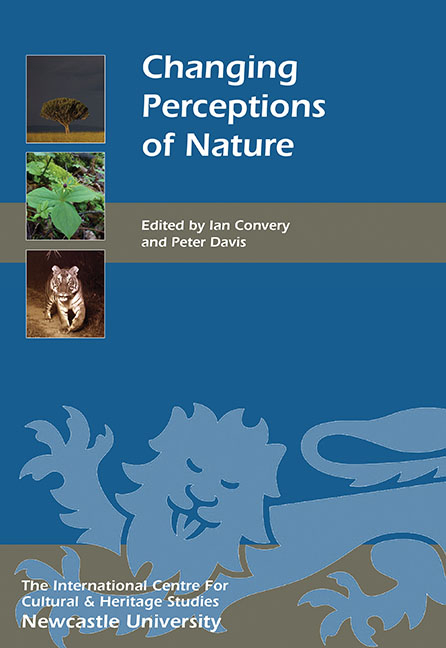Book contents
- Frontmatter
- Contents
- List of Illustrations
- Acknowledgments
- List of Abbreviations
- Foreword
- Introduction
- HISTORICAL PERSPECTIVES ON NATURE
- COLLECTING NATURE
- 7 Renaissance Collecting and Understanding of the Natural World
- 8 Botanical Collecting, Herbaria and the Understanding of Nature
- 9 Taxidermy and the Representation of Nature
- 10 The Significance of Natural History Collections in the Twenty-first Century
- INTERPRETING NATURE AND LANDSCAPES
- CONSERVING NATURE
- PEOPLE–NATURE INTERACTIONS
- List of Contributors
- Index
- Miscellaneous Endmatter
10 - The Significance of Natural History Collections in the Twenty-first Century
from COLLECTING NATURE
Published online by Cambridge University Press: 26 October 2017
- Frontmatter
- Contents
- List of Illustrations
- Acknowledgments
- List of Abbreviations
- Foreword
- Introduction
- HISTORICAL PERSPECTIVES ON NATURE
- COLLECTING NATURE
- 7 Renaissance Collecting and Understanding of the Natural World
- 8 Botanical Collecting, Herbaria and the Understanding of Nature
- 9 Taxidermy and the Representation of Nature
- 10 The Significance of Natural History Collections in the Twenty-first Century
- INTERPRETING NATURE AND LANDSCAPES
- CONSERVING NATURE
- PEOPLE–NATURE INTERACTIONS
- List of Contributors
- Index
- Miscellaneous Endmatter
Summary
‘It belongs in a museum’ is a phrase commonly used to describe something that is archaic and redundant. The image frequently conjured to indicate the negative side of museums is of ‘an assortment of dusty stuffed animals’ (eg Lee 2000, 237). Conversely, a study by Jenkins and Broadley (2013) reported that natural history galleries constitute museums’ most popular displays. The impact that natural history collections can have on our appreciation and understanding of natural heritage is immediate in a fashion that few other media possess. In considering the ongoing contribution of these collections to our perception and understanding of nature we need both to understand their historical origins and to appreciate how the modern world can ask new questions of them. The significance of natural history collections in national or larger university museums may seem self-apparent, but an important element of the national resource of such collections is dispersed among smaller museums. Here I look at the history and present use of the natural history collections at Tullie House Museum in Carlisle – a broadly typical provincial natural history museum in the UK.
HISTORY OF THE NATURAL HISTORY COLLECTIONS AT TULLIE HOUSE MUSEUM
Natural history collecting began as a private pastime for a privileged few. In the nineteenth century the Victorian collecting craze (Barber 1980) took natural history collecting to new heights and, combined with the enthusiasm for self-improvement and education, became a popular activity across a broad spectrum of society. While there was undoubtedly a detrimental effect in the overcollecting of some rare and localised species,1 this was outweighed by the benefits and has had a lasting impact. Local natural history societies were widely established and many, such as Carlisle Natural History Society, continue to operate. As a result, Britain has a significant community of knowledgeable, active amateur naturalists who have generated an unsurpassed record of biodiversity information. These local societies were often at the forefront of a new nature conservation movement as a result of increasing knowledge and concern for wildlife. Many local societies either formed their own museums to house their collections or established close relationships with existing public museums. Such was the case in Carlisle, where a new public museum was established at Tullie House in 1893 by the Carlisle Corporation.
- Type
- Chapter
- Information
- Changing Perceptions of Nature , pp. 107 - 116Publisher: Boydell & BrewerPrint publication year: 2016

